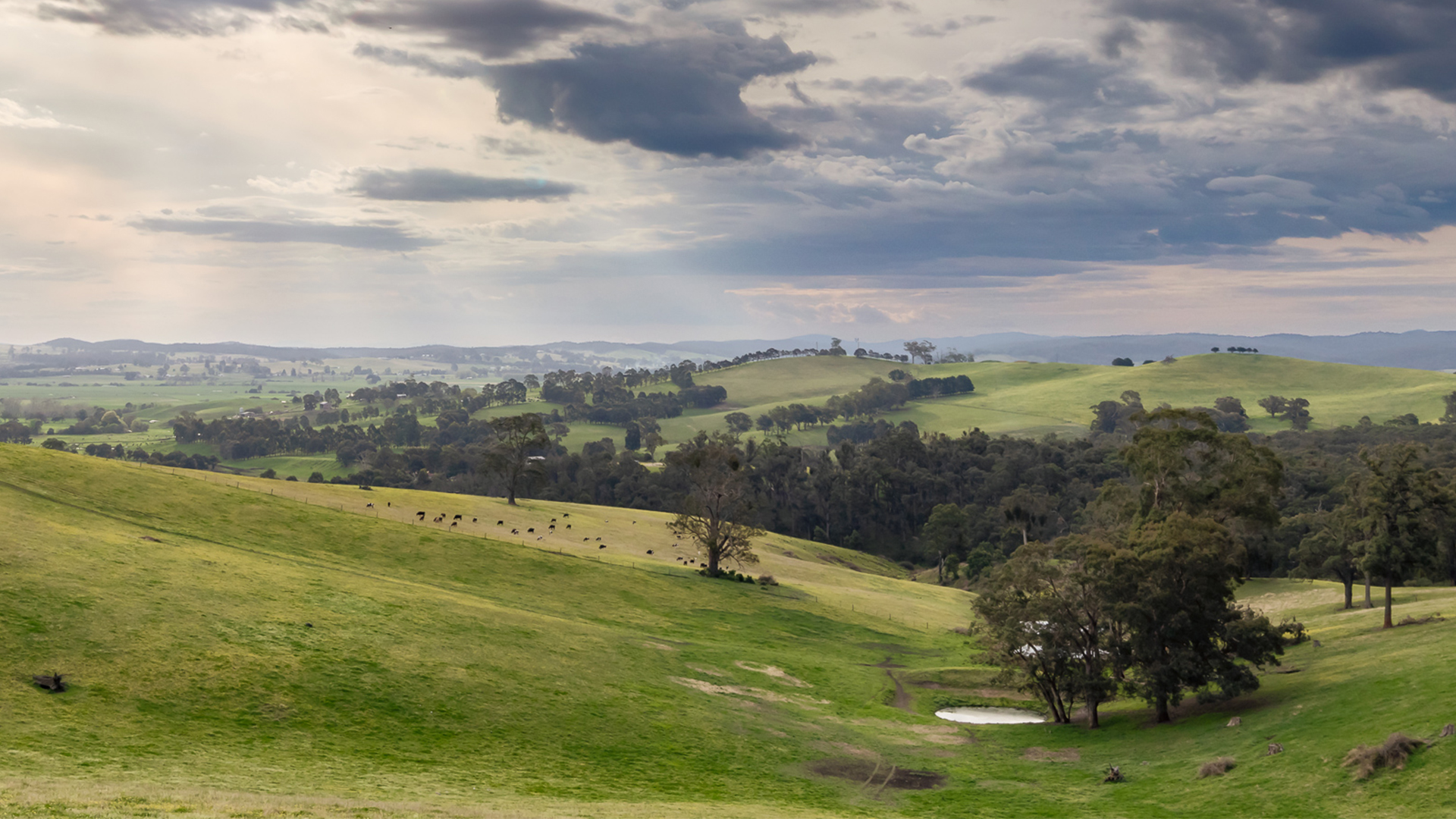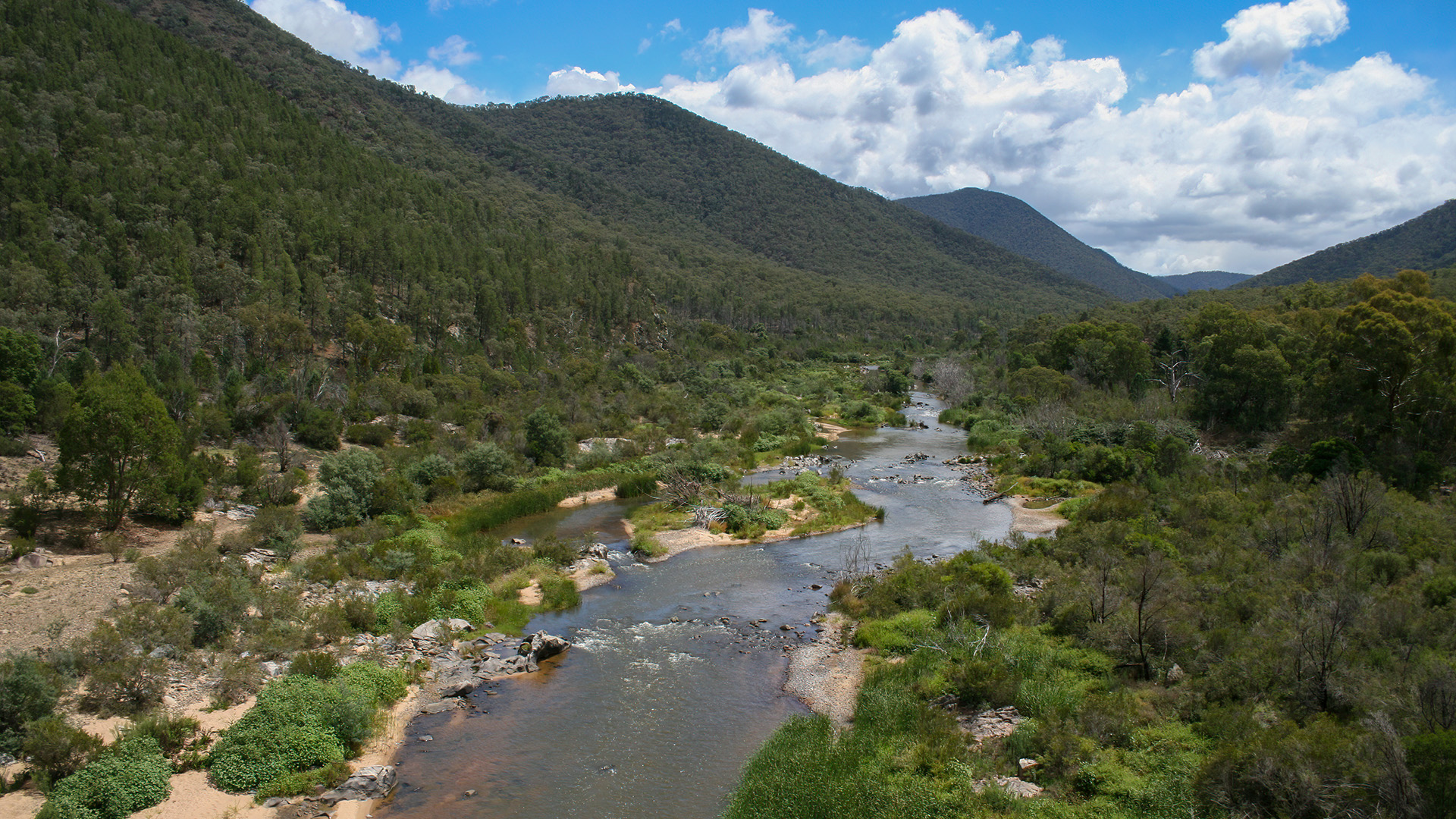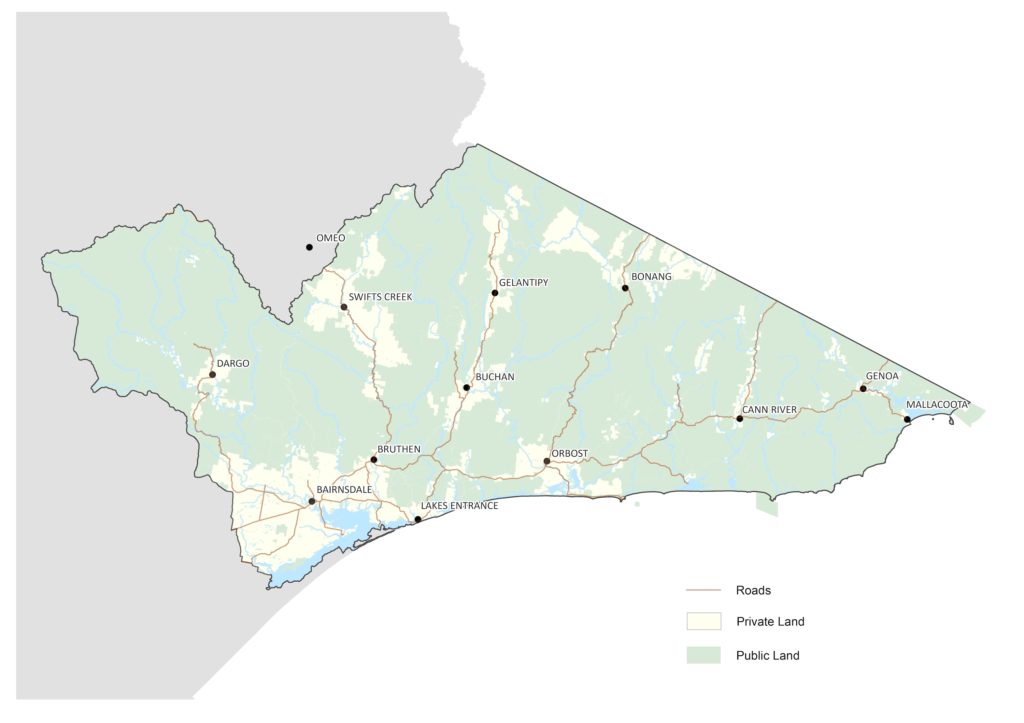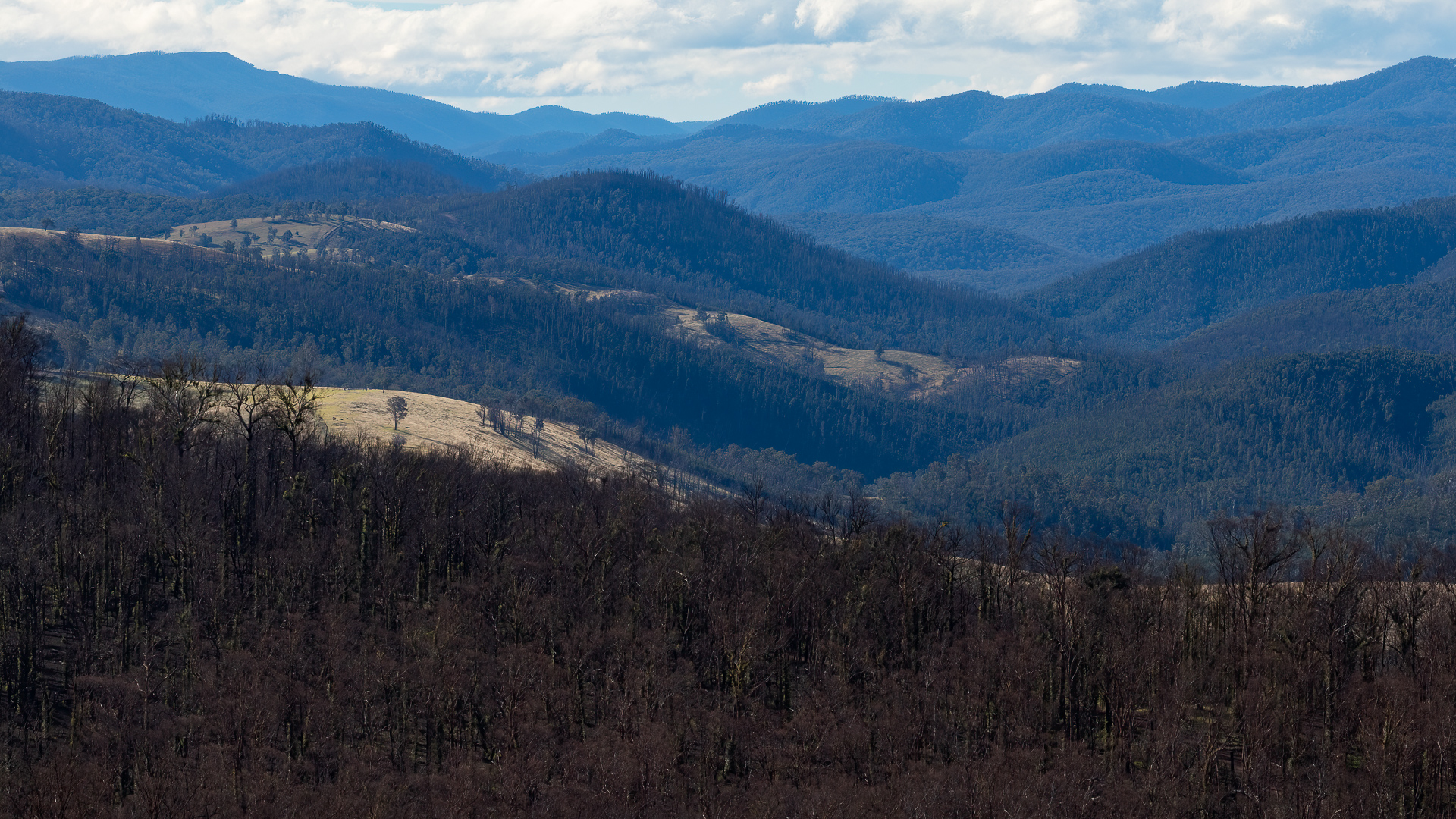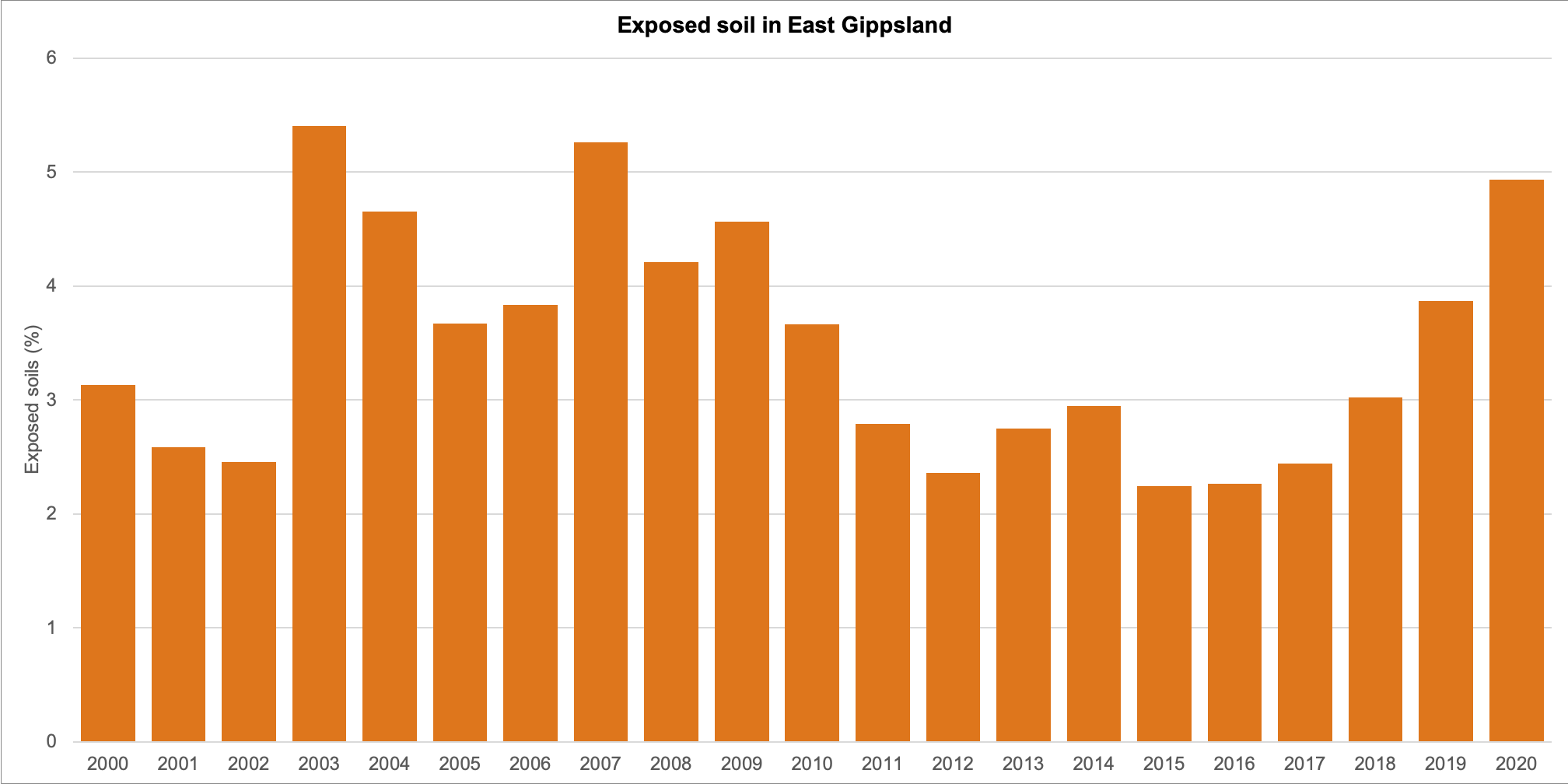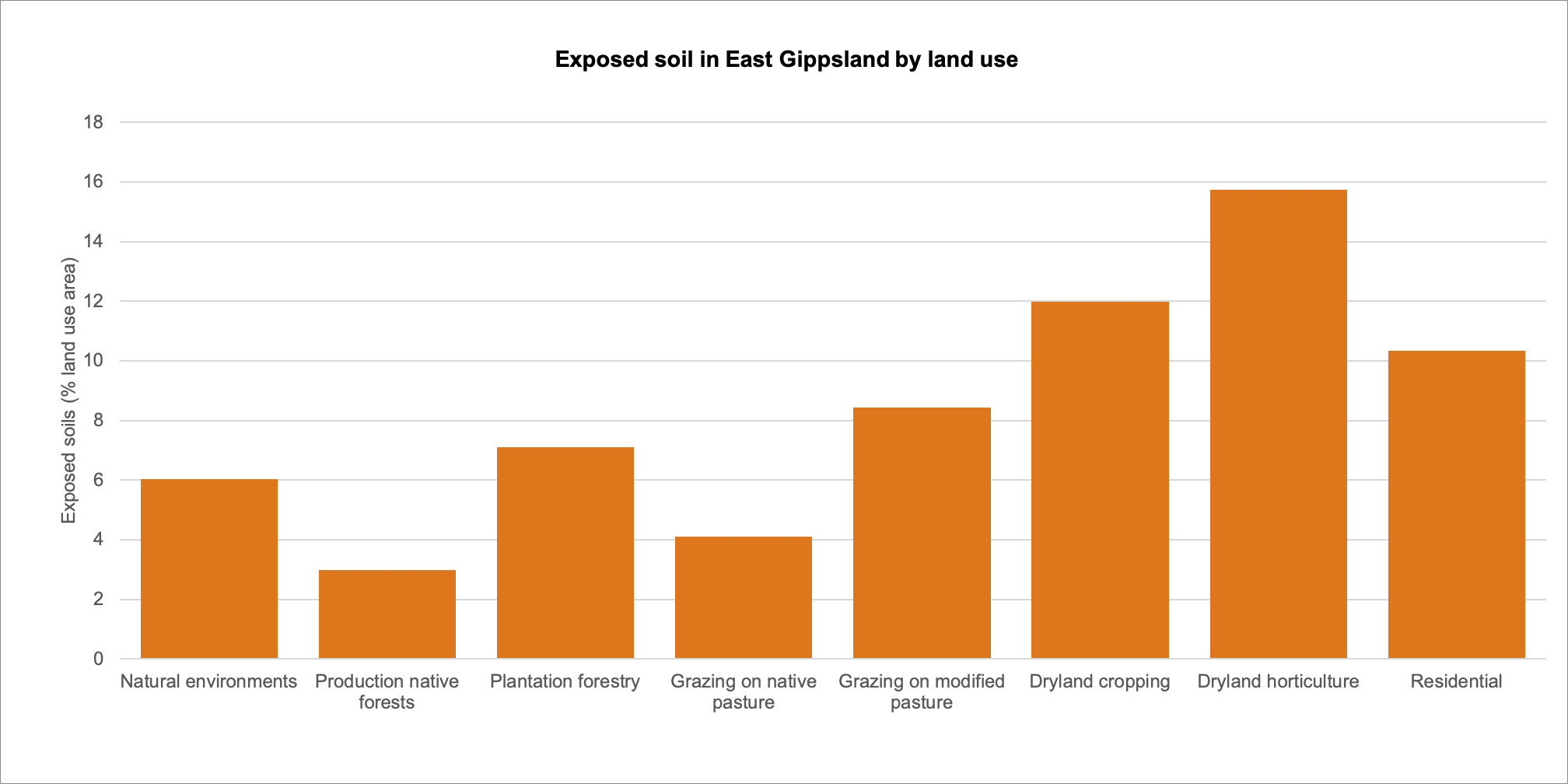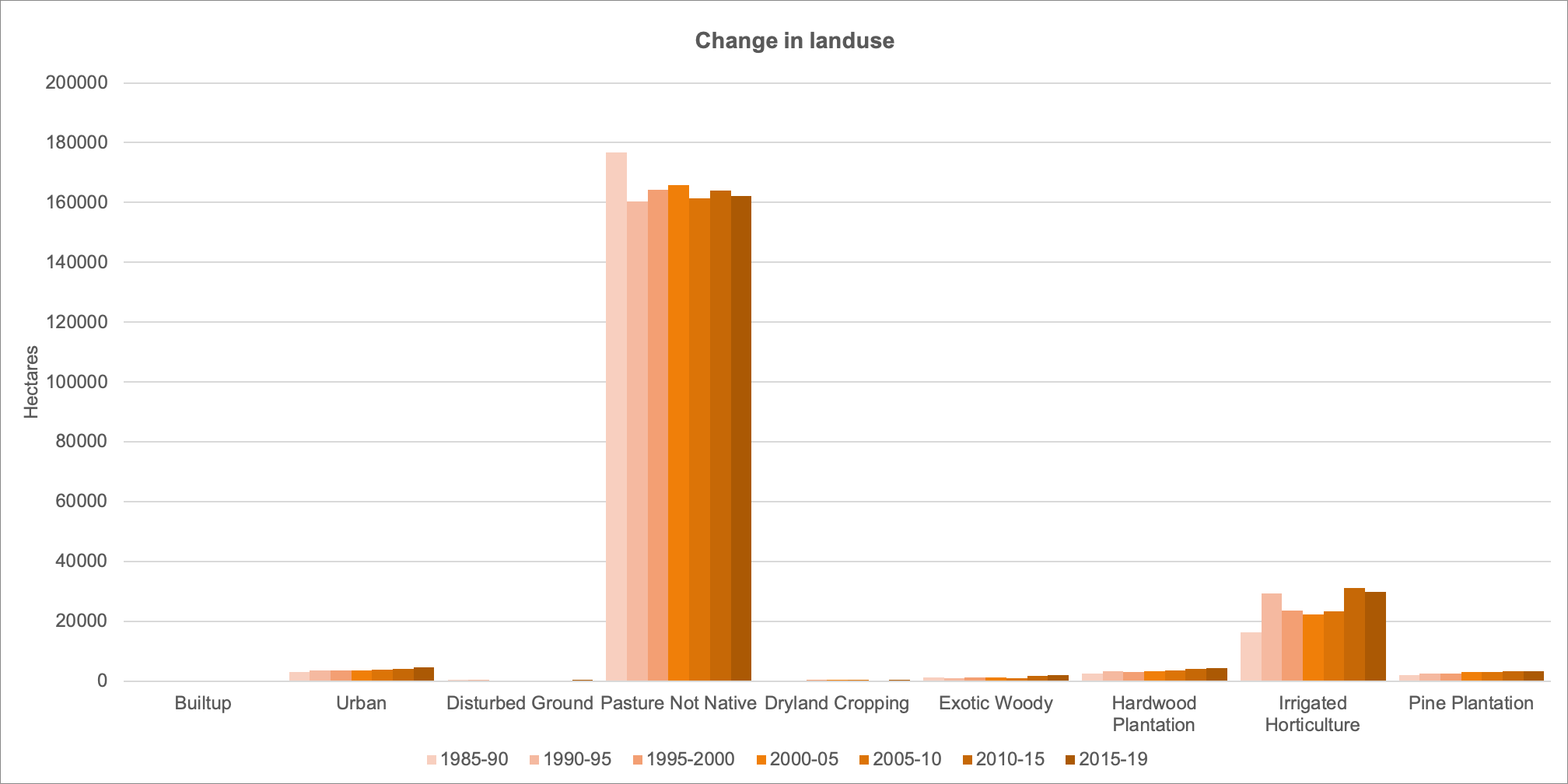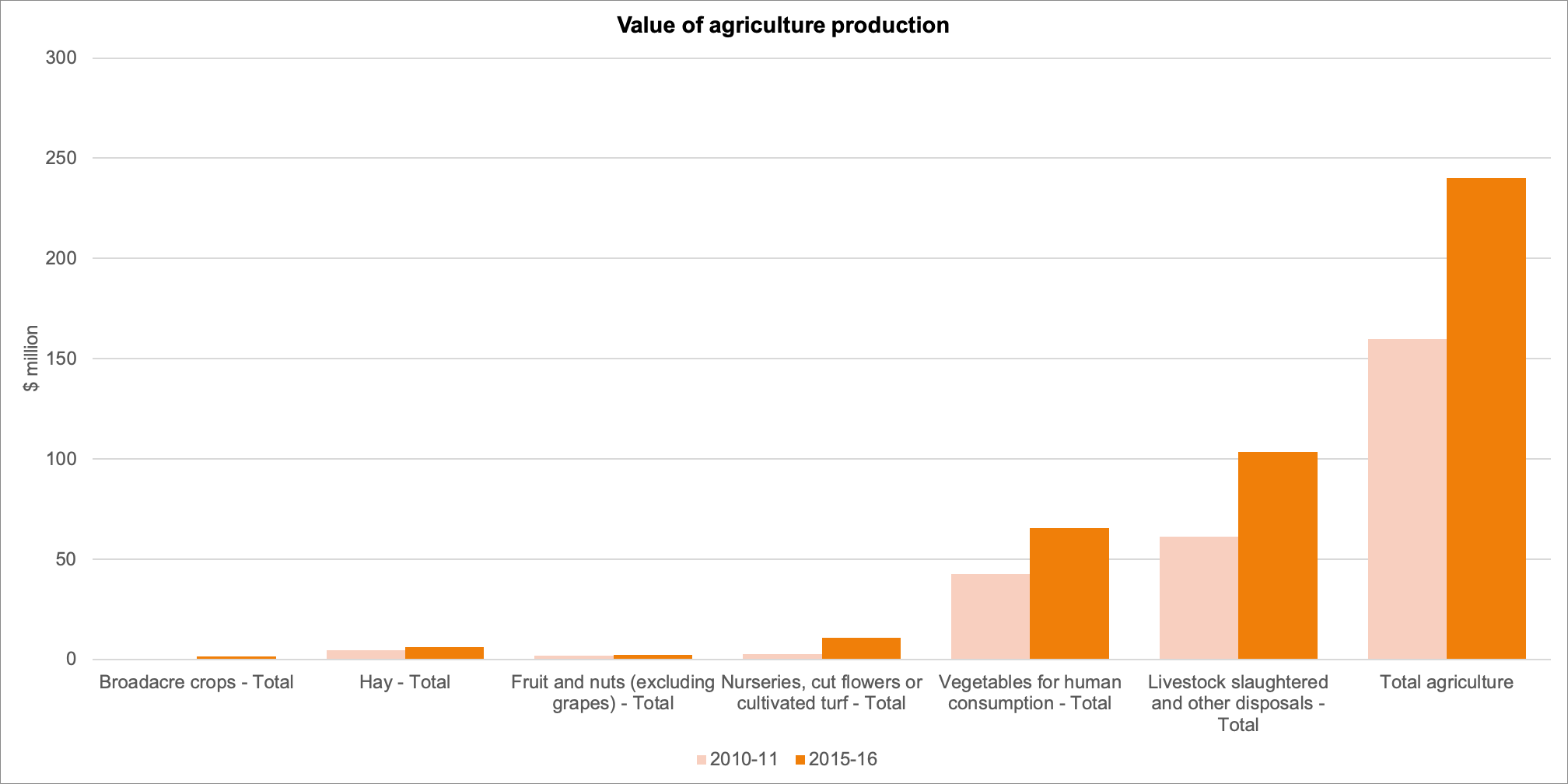The ‘land theme’ of this Regional Catchment Strategy includes all the terrestrial (land based) environments of East Gippsland. Our land provides for a vast array of natural values and supports important productive enterprises and industry that rely on these values, including agricultural, recreation and tourism.
Our landscape values… a snapshot
The terrestrial environments of East Gippsland support our biodiversity, provide a productive landscape, and offer places to explore and enjoy.
The East Gippsland region covers around 2.2 million hectares and represents around 10% of Victoria. The region is bounded by the Great Dividing Range to the north, where mountain peaks rise to 1870 metres and extends south to the coast.
Large areas of public land cover East Gippsland, including state forests, national and coastal parks. Private land covers less than 20% of the region. Grazing occupies the largest area of this private land, with significant productive areas of irrigated horticulture and dairying on the floodplains of the Snowy and Mitchell Rivers.
Soil types across the region vary from east to west and across freehold land, supporting broad scale grazing of sheep and cattle. Intensive horticulture and cropping are limited to the more fertile soils found in the river valleys and on the Redgum Plains.
The climate of East Gippsland is cool temperate and influenced by altitude and distance to the coast.
